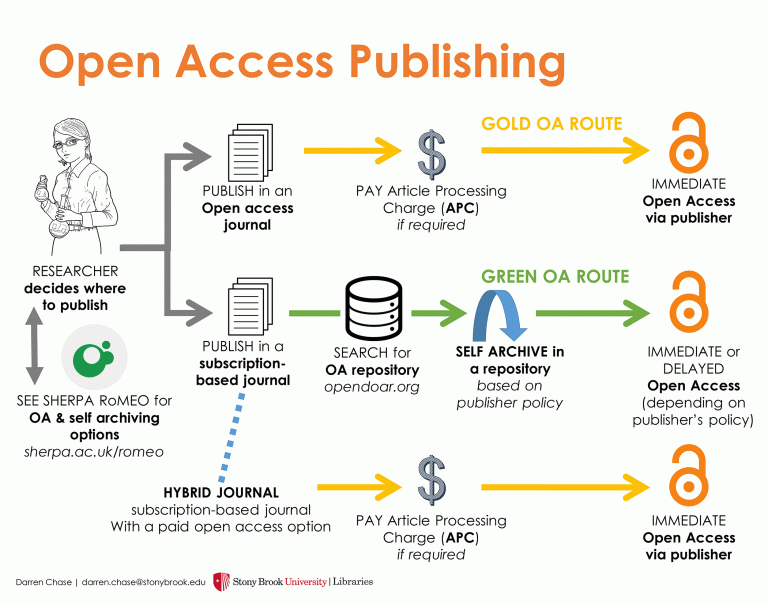Open Access is a publishing model where research is made freely available online for people to read and reuse. Open Access ensures that anyone can access and use these results—to turn ideas into industries and breakthroughs into better lives.
In addition to being a type of publishing, open access is a movement that is transforming the traditional model of scholarly publishing and working to create a new mode of scholarly publishing that is more equitable, more beneficial to society, and promotes scientific transparency and rigor. Through unrestricted access and use of scientific articles, OA eliminates the barriers that prevent research from becoming actionable knowledge that improves society.

Open Access has many benefits to both the researcher and the public, these include:
The author publishes their work in an open access journal that allows free access to the article immediately upon publication. Journals are peer-reviewed, are easy to find, and allow authors to retain copyright. Gold OA journals sometimes, but not always, charge authors article processing charges (APCs) to publish open access. This is most common when publishing in "Hybrid" journals, where some articles are made open-access in a non-OA journal.
The author makes a version of the article made publicly available in an online repository. This is often called "self-archiving" your work. These repositories can be subject-based (such as MedRxiv), or be specific to a single research institution. Articles can be preprints (not peer-reviewed) or postprints (peer-reviewed), depending on the repository and article in question. Contact the library if you would like assistance understanding if you can archive your published work.

Myth: OA publishers have lower quality than traditional publishers.
Research has found that OA journals have comparable methodological and reporting standards as non-OA journals (Pastorino et al 2016). In fact many traditional, prestigious journals now have open access publishing options.
Myth: All OA publishers charge APCs.
While some publishers charge steep APC fees, 71% of OA journals do not charge an article processing charge (Crawford 2016).
Myth: OA journals have poor impact factors.
In reality, the IFs of OA journals are steadily approaching the IFs of subscription journals (Bjork and Solomon 2012).